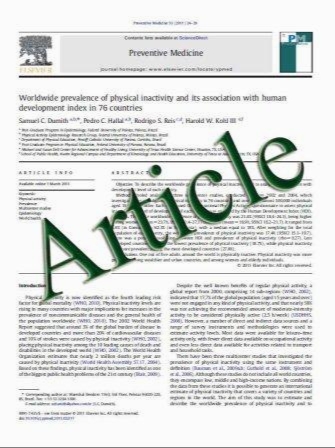Vascular characterisation of triple negative breast carcinomas using dynamic MRI
- نوع فایل : کتاب
- زبان : انگلیسی
- مؤلف : Sonia P. Li & Anwar R. Padhani & N. Jane Taylor & Mark J. Beresford & Mei-Lin W. Ah-See & J. James Stirling & James A. d’Arcy & David J. Collins & And
- چاپ و سال / کشور: 2011
Description
Objectives Triple-negative (ER-/PR-/HER2-) breast carcinomas (TNBC) are aggressive tumours with underexplored imaging features. This study investigates whether their vascular characteristics as assessed by dynamic contrastenhanced (DCE) and dynamic susceptibility contrastenhanced (DSC) MRI are distinct from the prognostically more favourable ER+/PR+/HER2- cancers. Methods Patients with primary breast cancer underwent MRI before neoadjuvant chemotherapy and were identified as ER-/ PR-/HER2- or ER+/PR+/HER2- from core biopsy specimens. MRI parameters reflecting tissue perfusion, permeability, and extracellular leakage space were measured. Values for inflow transfer constant (Ktrans), outflow rate constant (kep), leakage space (ve), area under the gadolinium curve (IAUGC60 ), relative blood volume (rBV) and flow (rBF), and Mean Transit Time (MTT) were compared across receptor status and with known prognostic variables. Results Thirty seven patients were assessable in total (16 ER-/ PR-/HER2-, 21 ER+/PR+/HER2-). Lower ve (p=0.001), shorter MTT (p=0.007) and higher kep values (p=0.044) were observed in TNBC. ve was lower across all T stages, node-negative (p=0.004) and low-grade TNBC (p=0.037). ve was the best predictor of triple negativity (ROC AUC 0.80). Conclusions TNBC possess characteristic features on imaging, with lower extracellular space (higher cell density) and higher contrast agent wash-out rate (higher vascular permeability) suggesting a distinctive phenotype detectable by MRI.
Eur Radiol (2011) 21:1364–1373 DOI 10.1007/s00330-011-2061-2 Received: 23 September 2010 / Revised: 16 November 2010 / Accepted: 7 December 2010 / Published online: 22 January 2011


